Enough interesting things have happened during the second half of July so far that I thought I’d share them.
Wood Storks!
On the evening of July 16th I was out on the east half of the trail looking for the juvenile Roseate Spoonbill that had been spotted a couple weeks ago. (I think the spoonbill is still around. It was last observed near the Parmer Village pond on July 24.) I didn't find the spoonbill, but I was surprised and excited when two large white birds flew over me headed downstream. I could see by their dark flight feathers and dark heads that they were Wood Storks! When I least expected it, I had just seen a new species for my Lake Creek Trail list, number 230! They flew over Parmer Lane, circled and gained some altitude, and then they seemed to descend. Maybe they were landing on Ganzert Lake? (This lake is on private property and I only know it from Google Maps.) Here they are circling in the distance:
We have a small Purple Martin roost happening over the soccer fields and large baseball field of Town and Country Optimist Club. On the morning of July 22 Steven McDonald and I found them and I estimated there were 1500 birds. On July 24 at about 7 PM I estimated there were 2000 birds. Purple Martins form communal roost sites like this after their done breeding for the season and before they head south for the winter. I think they also communally roost on their wintering grounds. Some of the roosts have tens of thousands of birds! (Look up the Purple Martin parties Travis Audubon is hosting at a much larger local roosting site they've found.) Here are a few on one of Town and Country's light posts:
If you want to seem them, go in the evening. I the morning they disperse to hunt for insects all day. And they won't be here much longer!
Purple Martin Roost
We have a small Purple Martin roost happening over the soccer fields and large baseball field of Town and Country Optimist Club. On the morning of July 22 Steven McDonald and I found them and I estimated there were 1500 birds. On July 24 at about 7 PM I estimated there were 2000 birds. Purple Martins form communal roost sites like this after their done breeding for the season and before they head south for the winter. I think they also communally roost on their wintering grounds. Some of the roosts have tens of thousands of birds! (Look up the Purple Martin parties Travis Audubon is hosting at a much larger local roosting site they've found.) Here are a few on one of Town and Country's light posts:
If you want to seem them, go in the evening. I the morning they disperse to hunt for insects all day. And they won't be here much longer!
Re-sighted individual Snowy Egret
Individual birds mostly all look alike to us, but on the same evening I saw the Wood Storks, I noticed a Snowy Egret with a dark area on its throat that looked familiar. I took this photograph of it:
My guess is that this dark area is some kind of scar that feathers won't grow over. When I got home I searched through my photos and sure enough, here's the same bird from July 10, 2016, a little further upstream:
I wonder how long this egret has lived on Lake Creek? Is it just here for part of the year? Snowy Egrets can be found in central Texas all year long, but they are also migratory in other parts of their range. So many questions! Let me know if you see this unique individual.
One of our early songbird migrants is the Least Flycatcher, and on the evening of July 24th I thought I heard one in a neighbor's tree. I heard a few "whit" calls but I could never see the bird.
Blue-gray Gnatcatchers are tiny, and are shaped and sort of colored like little mockingbirds. The easiest way to detect them is by their soft raspy calls.
My guess is that this dark area is some kind of scar that feathers won't grow over. When I got home I searched through my photos and sure enough, here's the same bird from July 10, 2016, a little further upstream:
I wonder how long this egret has lived on Lake Creek? Is it just here for part of the year? Snowy Egrets can be found in central Texas all year long, but they are also migratory in other parts of their range. So many questions! Let me know if you see this unique individual.
South-bound migrants
Even though I know birds' migration schedules intellectually, it's still a little emotionally surprising how early south-bound migration starts. Shorebirds are some of the earliest south-bound migrants and they are already moving through Austin. In the past couple weeks on Lake Creek I've seen Least Sandpipers, Spotted Sandpipers, and Solitary Sandpipers. Here's one of the Solitary Sandpipers I saw on July 22:
One of our early songbird migrants is the Least Flycatcher, and on the evening of July 24th I thought I heard one in a neighbor's tree. I heard a few "whit" calls but I could never see the bird.
Post-breeding wanderers
Blue-gray Gnatcatchers and Orchard Orioles are migratory songbirds that breed in central Texas as well as further north. But they don't like neighborhoods for breeding habitat; you usually have to get out in the country a bit to observe them here in the summer. But during migration they pass through our neighborhood, and I've been hearing and seeing a few over the past couple weeks on Lake Creek Trail. I don't know if the birds I'm observing now are actually on their way south, or if they're what's called "post breeding wanderers," birds just wandering outside their normal breeding habitat after breeding is done for the season. Here's one of the Orchard Orioles. It's a first-year male I observed on July 22. The first year males have this unique plumage that is similar to the female plumage but with a black face and throat:
Blue-gray Gnatcatchers are tiny, and are shaped and sort of colored like little mockingbirds. The easiest way to detect them is by their soft raspy calls.

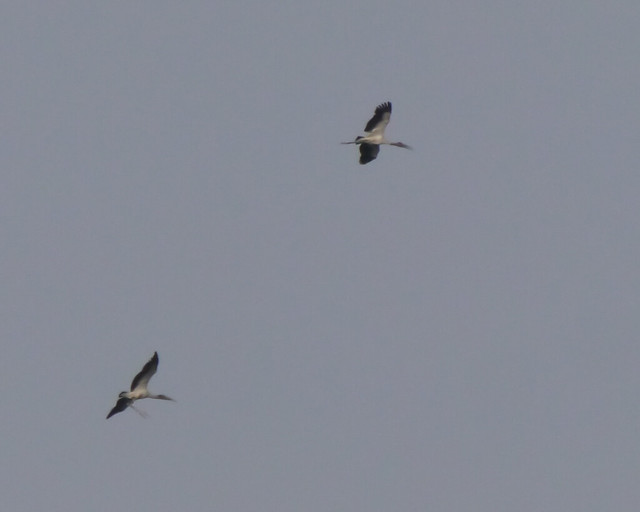
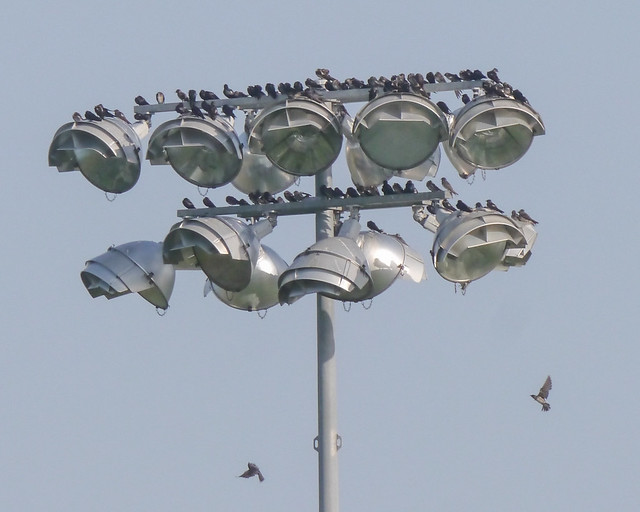
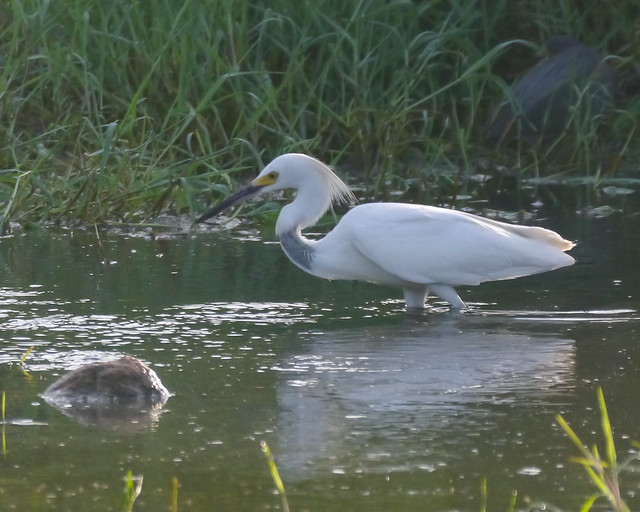
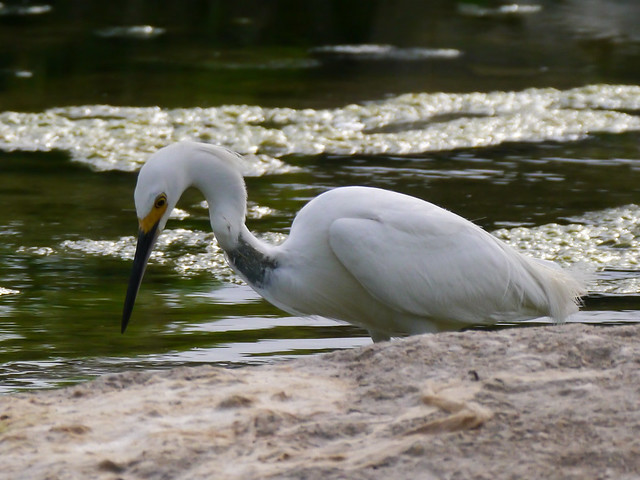
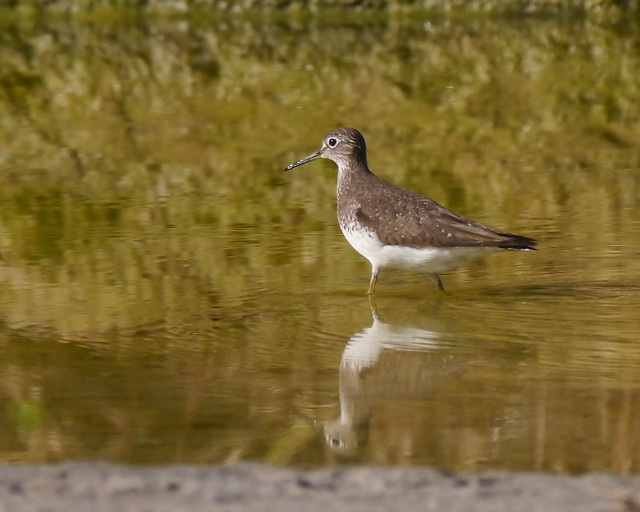
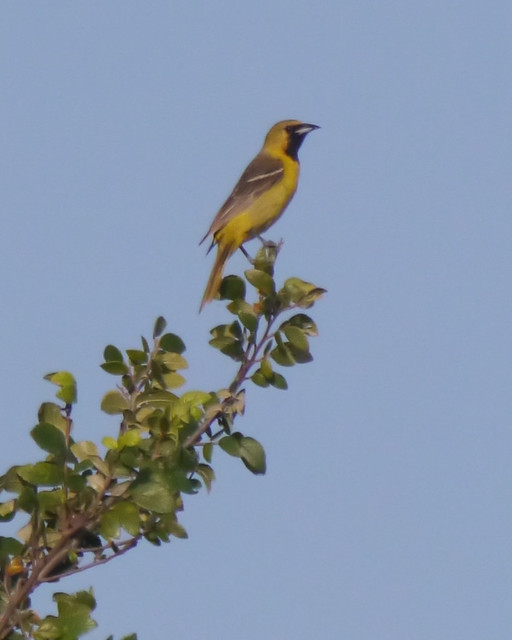
No comments:
Post a Comment